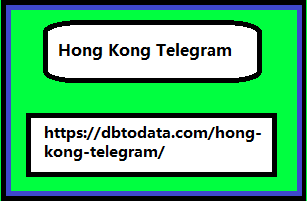Post by account_disabled on Mar 4, 2024 23:28:19 GMT -7
Among the primary CTAs we report calls to action of high value for the company and user involvement: from the simplest "sign up" of a newsletter to more important requests for action such as download, subscription and purchase of products or services. The user often does not get to actions of economic value in the first moment of contact. This is where secondary Call To Actions come into play , which have the purpose of engaging with the brand rather than implying an actual action. Here we include the invitation to read an article, share news on social media or follow a reading path. Nothing "challenging" for the user but certainly useful in the path of brand recognition.
When we are faced with a primary CTA we can notice that the message is short and clear: "buy, download, book, donate now, subscribe, I want to receive it"; Are these examples you've already seen? I'm sure yes. Here there is often a button, to make the call to perform an action even more explicit. The secondary CTA usually has a much longer and more descriptive text and is positioned under the first paragraph of the Hong Kong Telegram Number Data main body of text of the content in which it is hosted. The balanced and reasoned use of primary and secondary calls to action helps the reader to navigate without pressure along his path of awareness and to choose the type of action he prefers. If you are measuring the number of actions performed on each CTA you will also be able to give different weights to your digital contents and learn to use them more effectively.

How to write a call to action Let's now see what are the rules and practical instructions to follow to write a call to action that works. It was said that calls to action are, in the end, buttons with a clear invitation to carry out a particular action whose result generates value for the company. Obviously in a button there are few elements that matter: the position, the color, the size and obviously the text they contain. While some elements are typical of a world that revolves around the user interface, the interface that I am building to help my users perform certain actions on my site, the copy straddles UI and UX , between user interface and user experience . In fact, the text contained in the button not only allows users to perform a certain action that is strategic for the company but guides them in the navigation itself, helping them to choose the right navigation path for their needs at that moment.
When we are faced with a primary CTA we can notice that the message is short and clear: "buy, download, book, donate now, subscribe, I want to receive it"; Are these examples you've already seen? I'm sure yes. Here there is often a button, to make the call to perform an action even more explicit. The secondary CTA usually has a much longer and more descriptive text and is positioned under the first paragraph of the Hong Kong Telegram Number Data main body of text of the content in which it is hosted. The balanced and reasoned use of primary and secondary calls to action helps the reader to navigate without pressure along his path of awareness and to choose the type of action he prefers. If you are measuring the number of actions performed on each CTA you will also be able to give different weights to your digital contents and learn to use them more effectively.

How to write a call to action Let's now see what are the rules and practical instructions to follow to write a call to action that works. It was said that calls to action are, in the end, buttons with a clear invitation to carry out a particular action whose result generates value for the company. Obviously in a button there are few elements that matter: the position, the color, the size and obviously the text they contain. While some elements are typical of a world that revolves around the user interface, the interface that I am building to help my users perform certain actions on my site, the copy straddles UI and UX , between user interface and user experience . In fact, the text contained in the button not only allows users to perform a certain action that is strategic for the company but guides them in the navigation itself, helping them to choose the right navigation path for their needs at that moment.
